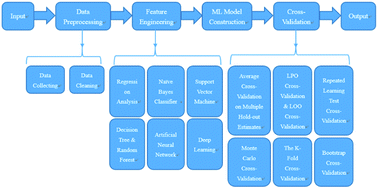Machine learning-driven new material discovery
Abstract
New materials can bring about tremendous progress in technology and applications. However, the commonly used trial-and-error method cannot meet the current need for new materials. Now, a newly proposed idea of using machine learning to explore new materials is becoming popular. In this paper, we review this research paradigm of applying machine learning in material discovery, including data preprocessing, feature engineering, machine learning algorithms and cross-validation procedures. Furthermore, we propose to assist traditional DFT calculations with machine learning for material discovery. Many experiments and literature reports have shown the great effects and prospects of this idea. It is currently showing its potential and advantages in property prediction, material discovery, inverse design, corrosion detection and many other aspects of life.

- This article is part of the themed collection: Recent Review Articles


 Please wait while we load your content...
Please wait while we load your content...